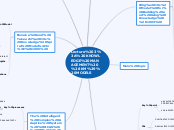Lecture 3: KNOWLEDGE MANAGEMENT (KM) MODELS
Choo’s Sense-Making KM Model (1998)
From an organisation's knowledge vision perspective
Sense making
3 phase
Ecological change
Enactment
Selection and retention
Knowledge creating
transformation of personal knowledge
new knowledge and competencies
feeds the decision-making
process
Decision making
identify and evaluate alternative
Strengths
Holistic treatment of key KM Cycle processes
Represents organizational actions
Particularly well suited to simulations and
hypothesis or scenario-testing applications.
Wiig’s Model for Building and Using Knowledge (1993)
Principle
“in order for knowledge to be useful and
valuable, it must be organized”
Knowledge organization
Completeness
Connectedness
Congruency
Perspective and Purpose
Internalization
Level 1
Novice
Level 2
Beginner
Level 3
Competent
Level 4
Expert
Level 5
Master
Strengths
Most pragmatic/practical model
easily be integrated
adopt a more detailed or refined approach to managing knowledge
Drawback
lack of research and/or practical experience
Main topic
Boisot’s I-space KM Model (1998)
Key point
easily data can be structured and
converted into information
shared context
3Ds
Codified - Uncodified
Abstract - Concrete
Diffused - Undiffused
Dynamic flow
1. Scanning
2. Codification
3. Abstraction
4. Diffusion
5. Absorption
6. Impacting
Strength
Links the content, information and KM in an
effective way
Maps the organisational knowledge assets to social
learning cycle
Drawbacks
Less known
von Krogh and Roos’ Model of Organizational
Epistemology (1995)
Key Factor
Mind set of the individual
communication in the organization
organizational structure
relationship between the members
management of human resources
Nonaka and Takeuchi’s Knowledge Spiral Model
(1995)
Spiral Model
Socialization (tacit-to-tacit)
Drawbacks
Knowledge remains tacit
Rarely captured
Time consuming
Externalization (tacit-to-explicit)
Advantages
Tangible and permanent
Easily shared and leveraged
Internalization (explicit-to-tacit)
Strongly linked to “learning by doing”
Combination (explicit-to-explicit)
Concepts
Sorted and systematized
Strengths
Tacit and explicit knowledge interact
reflect practices to ensure all forms of conversion are being adequately supported and developed.
Subtopic
Limitations
Does NOT address larger issues of how decision making takes place
The Intelligent Complex Adaptive System (ICAS) KM
Model by Bennet and Bennet (2004)
Key processes
Understanding
Creating new ideas
Solving problems
Making decisions
Taking actions to achieve desired results
4 major ways of describing
Creativity
Problem solving
Decision making
Implementation
